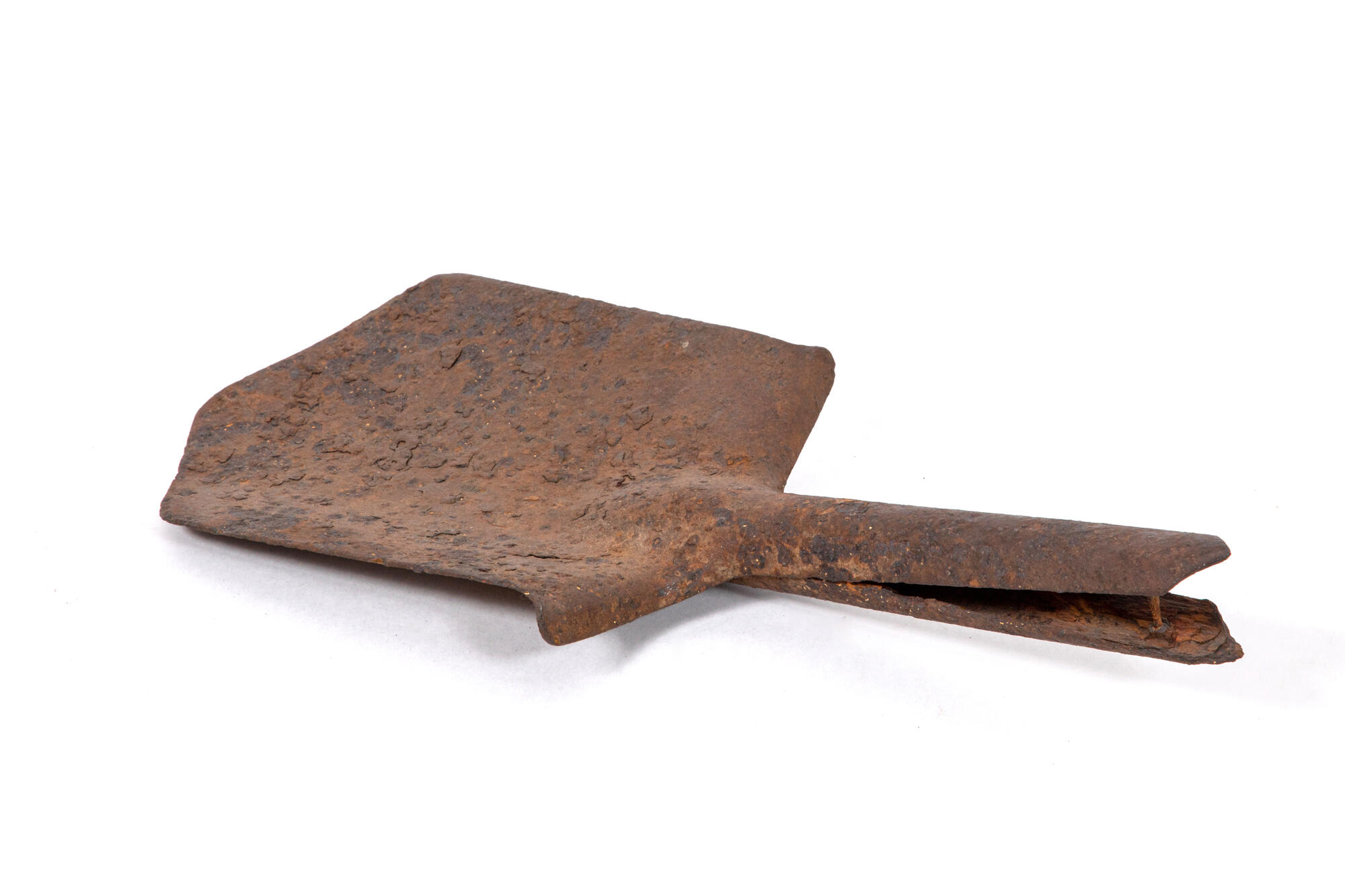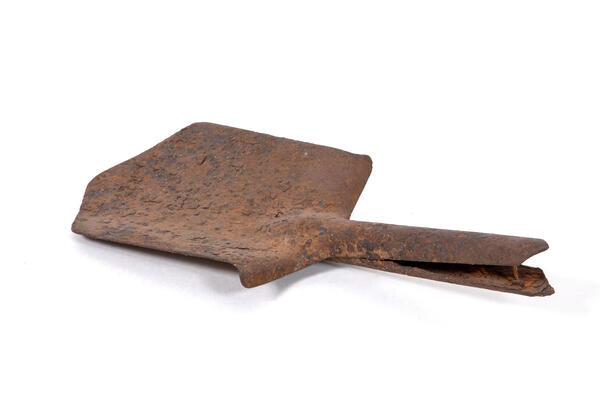This small infantry spade, which was used during the Great Patriotic War, was found during battlefield excavations, conducted in 2008-2010 in the Nelidovsky district, Tver Oblast. Natalia Usenko, head of the Noyabrsk joint search party ‘Vitalis’, transferred it to the museum.
These pentagonal spades were made of steel, the handles were made of hardwoods, and they were polished but not painted. Both bottom sides of the steel blade were sharpened. Soldiers called this tool a ‘sapper shovel’ (‘intrenching shovel’) or ‘saperka’ but this nickname did not correspond to the official documents.
In the ‘Instruction on engineering for the Red Army infantry’, which was enacted by the order of the People’s Commissar of Defense of the USSR No.172, dated from September 13, 1939, the names of the tools used by the Red Army were clearly defined: “Entrenching tools and materials used for engineering work. <…> For engineering work the infantry is provided with a compact portable and a larger transportable intrenching tool. This includes a small spade <…> The transportable intrenching tool is carried by the convoy and is delivered to the place of work by special order. It includes the sapper spade <…>“
The Russian term for an intrenching tool is “Schantsevy” (from the German “Schanze” meaning “trench, fortification”). Those were hand tools with which soldiers worked in the field. They were used to fortify positions — dig trenches, build earth ramparts (breastworks), and break down barriers.
In the field, every soldier always carried a small spade along with their rifle or submachine gun. It was worn on the back of the left hip in a special pouch, and hung from the waist belt. During battles, the blade was often simply tucked behind the waist belt to make it easier to grab it and dig under enemy fire or to use in hand-to-hand combat.
Usually, soldiers used the small infantry spade while lying down, kneeling, or sitting. It was inserted into the ground at a slight angle to cut small roots. After every 10-15 minutes of continuous work with the spade, soldiers were supposed to rest for 5-10 minutes. The soldiers who knew how to use a small infantry shovel correctly could dig a trench in 8 to 12 minutes, while those who could not use the tool would spend up to 20 to 30 minutes.
These pentagonal spades were made of steel, the handles were made of hardwoods, and they were polished but not painted. Both bottom sides of the steel blade were sharpened. Soldiers called this tool a ‘sapper shovel’ (‘intrenching shovel’) or ‘saperka’ but this nickname did not correspond to the official documents.
In the ‘Instruction on engineering for the Red Army infantry’, which was enacted by the order of the People’s Commissar of Defense of the USSR No.172, dated from September 13, 1939, the names of the tools used by the Red Army were clearly defined: “Entrenching tools and materials used for engineering work. <…> For engineering work the infantry is provided with a compact portable and a larger transportable intrenching tool. This includes a small spade <…> The transportable intrenching tool is carried by the convoy and is delivered to the place of work by special order. It includes the sapper spade <…>“
The Russian term for an intrenching tool is “Schantsevy” (from the German “Schanze” meaning “trench, fortification”). Those were hand tools with which soldiers worked in the field. They were used to fortify positions — dig trenches, build earth ramparts (breastworks), and break down barriers.
In the field, every soldier always carried a small spade along with their rifle or submachine gun. It was worn on the back of the left hip in a special pouch, and hung from the waist belt. During battles, the blade was often simply tucked behind the waist belt to make it easier to grab it and dig under enemy fire or to use in hand-to-hand combat.
Usually, soldiers used the small infantry spade while lying down, kneeling, or sitting. It was inserted into the ground at a slight angle to cut small roots. After every 10-15 minutes of continuous work with the spade, soldiers were supposed to rest for 5-10 minutes. The soldiers who knew how to use a small infantry shovel correctly could dig a trench in 8 to 12 minutes, while those who could not use the tool would spend up to 20 to 30 minutes.



